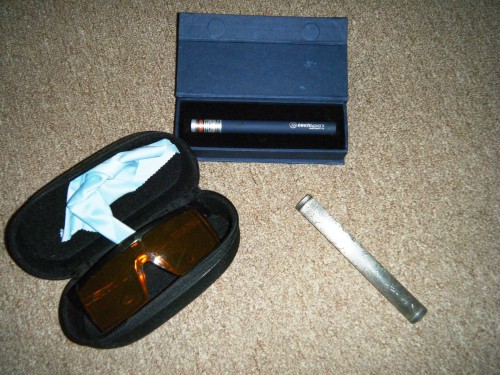
Back in late June Judie reviewed the SKYlasers 125mW green laser pointer, providing a fun look at some of the interesting things you can do with a laser such as that. Soon thereafter, TechLasers provided us with one of their 95mW Infinity II 532nm Green Laser Pointers to evaluate for review. Judie also sent me the SKYlasers pointer, so I could do a bit of comparing. I will also attempt to answer a slightly more serious question – why the heck does someone need a 95mW laser pointer?
I actually have a fairly interesting history in terms of interaction with lasers. As part of a small graduate research project I got to help put together a 10W CO2 laser to use for materials processing studies in the Electrical Engineering department. At that time it all looked and felt like something out of Real Genius on a much smaller scale and with much less popcorn. A few years later, in my first job with a small analytical instrumentation company I was able to work with university and product development scientists on the development of a laser-spectroscopy technique called FT-RAMAN. A couple of years after that, with yet another company, I was able to work on the prototype of the 157nm F2 laser, which was loads of fun but sort of scary – to get the proper conditions for lasing, the gas pressure was at ~8 atmospheres and you could hear the whole system creaking. Anyway, back to the review …
The TechLasers high-powered green laser pointer puts out a nominal 95mW beam of 532nm light, which happens to be in the green region of the wavelength spectrum. Interestingly, the problems with direct generation of green light seems to dot my work history, so I was interested to find out how they were achieving the wavelength. Turns out they are using a 808nm infrared laser diode to pump (i.e. provide exciting energy to initiate the lasing process) a Nd:YVO4 crystal which emits 1064nm light. That light goes through a special crystal which is called a frequency doubler, which converts a significant portion of the input energy to 532nm light (for those following along at home, 532 is half of 1064, it really is that simple). That light goes through an output mirror that will pass the 532nm light but block any residual 808nm and 1064nm light.
The whole package is shown above, which includes the laser, a set of safety glasses, and a nice case that TechLasers included that usually costs ~$30.
Here are the contents of the box:
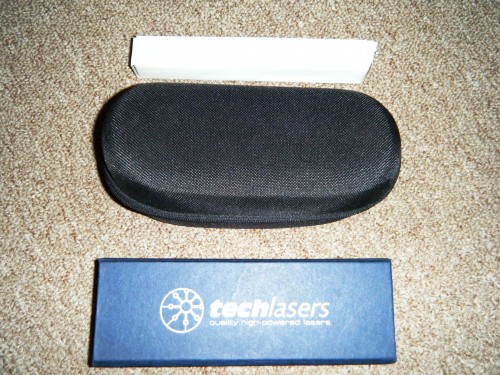
Here is the laser itself:

And finally, the cool case:

My first thought was ‘100mW of 532nm light … wow’! Think of the applications! In fact, there was a recent article about using lasers for blinding being applied with Somali Pirates:
The Laser Dazzle system is one of several technologies designed to counter the threat posed by Somali pirates off East Africa. The article said that the Laser Dazzle System can disable pirates from 1,000 yards. The laser will not harm the pirates but is designed to confuse them when shone on to their boat as they prepare to board tankers and cruise ships.
So that sounds really cool. Also, since that amount of light can do high-power spectroscopy, low-level ablation, and visible probing, it seemed to be of potential wide interest. In fact, one supplier claims uses including “military, medical and astronomy, indicator, teaching baton”.
So I wondered what is the biggest use of these light sources? Turns out that stage lighting is a huge application:
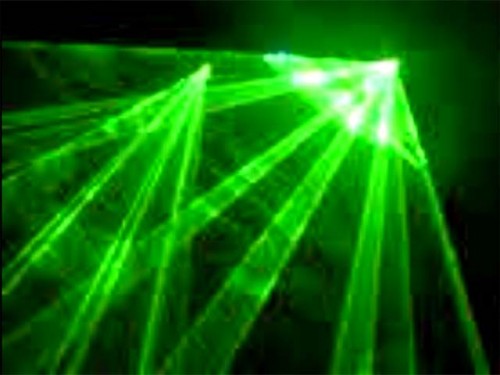
So I was flush thinking about all of the potential uses. But then turned my attention back to this particular product and I thought: there are no mounting points, no external shuttering or triggering, nothing at all to integrate this into any scientific experiment. You simply install two AAA batteries and press the switch.
Immediately a few things sprang to mind:
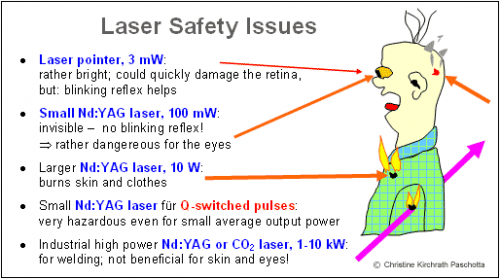
Indeed – 100mW of light is a lot of power! Judie’s review included the table of capabilities from SkyLasers:
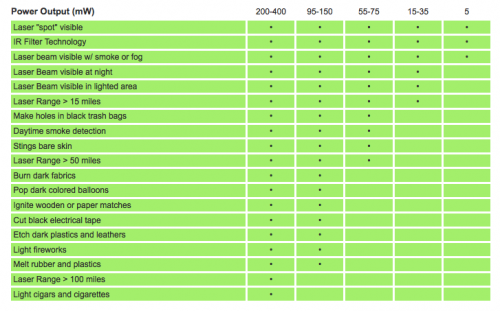
The bottom line is this: a 100mW laser is potentially extremely dangerous, and should only be used in a safe environment by trained personnel. I have scanned articles showing how many injuries and incidents have occurred due to folks buying these as toys, and I’m not surprised.
Here are a few pictures of playing around with the laser in a basic setting, showing how well it can burn opaque items:
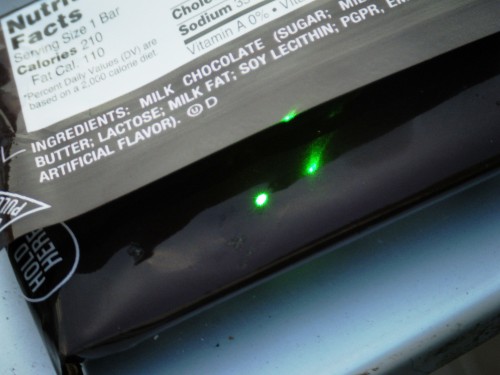
Easy enough – and stable enough – to ‘write’ through the plastic:
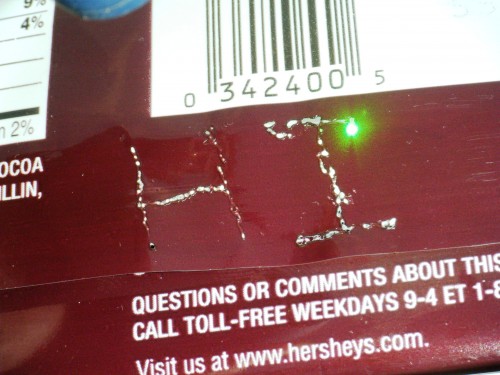
And finally this was supposed to be a dual-purpose shot, showing the visibility of the beam and the ability to smoke wood. Unfortunately the brightness of the reflection off the wood swamps the ability to see the burn-trail I had made.
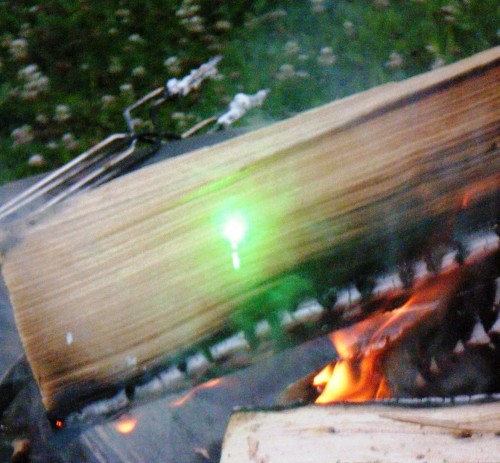
I have two thoughts: first, I am not being fair by focusing on the potential ills of using this laser pointer as a ‘wave around toy’, and second … well, I guess I just can’t get past the issue of having a very powerful laser with all of the trappings of a trivial 0.5mW laser pointer.
But what I have found is that there are definitely people using these things for research and experimentation. Because there is quite a market for these lasers outside of entertainment. I have been talking to folks who have come up with mechanisms to work the trigger and interrupt the beam – because at the list price of $300, this is much cheaper than standard research lasers of similar power.
So I have mixed feelings – for those with low research budgets this is a real boon, but too many others have taken to using these things for various forms of mischief. The basic laser meets all of the design specs and works very nicely – but there is a lack of safety features that could protect people from themselves and this very powerful beam that is packaged in a product that looks like a toy.
Where to Buy: TechLasers
Price: $299.99
What I Like:
– Great power in a portable package
– Low divergence beam
– Low price, nice included safety glasses
What Needs Improvement:
– Inherently dangerous to the potential target audience because of high power
– Device is not safety-controlled
– No interlocks or shutters
Source: TechLasers
Applications courtesy of Buzzle
Silly images courtesy of Encyclopedia of Laser Physics

Review: Techlasers Infiniti II 95mW 532nm Green Laser Pointer http://tinyurl.com/lq4ulp from @iNewsApp
95mw is not so strong in my eyes.